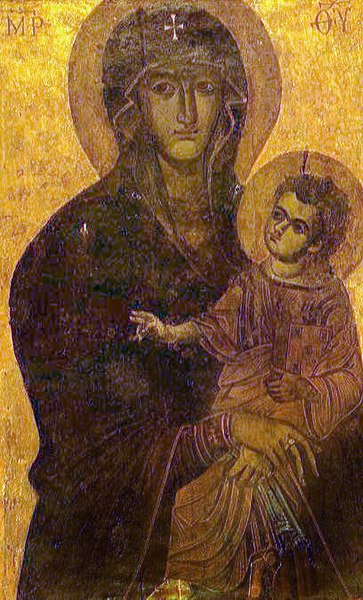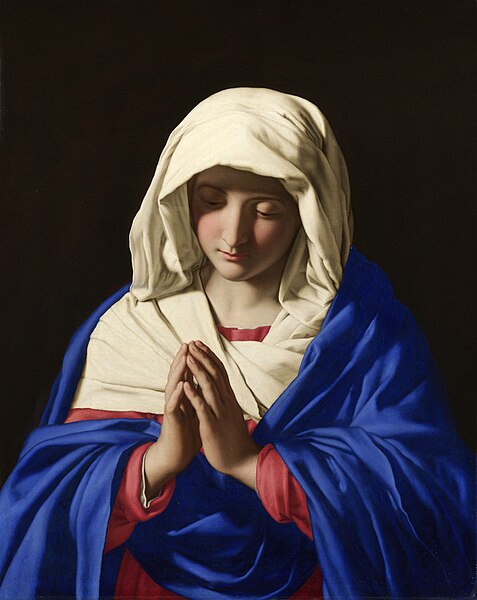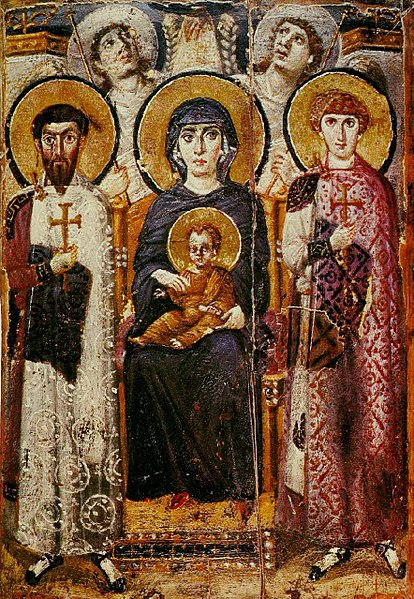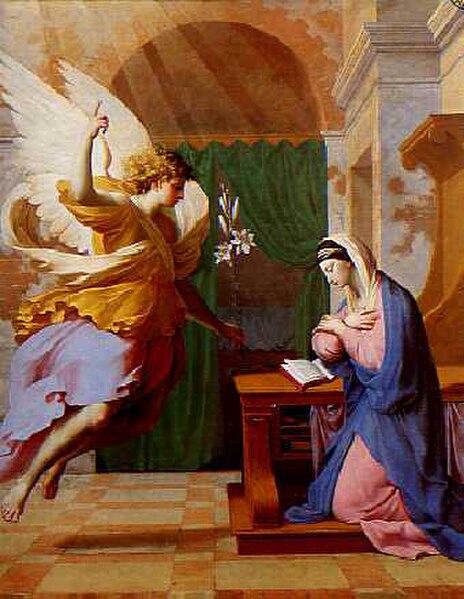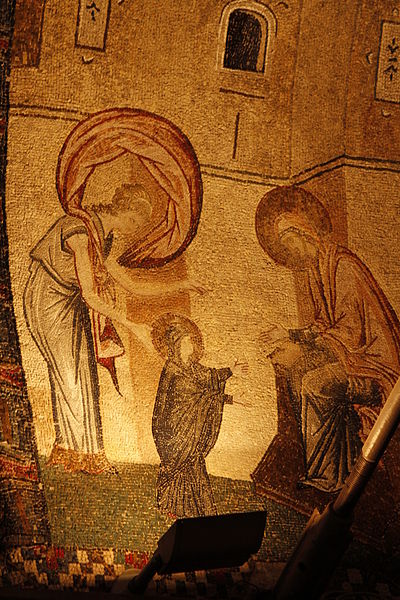In art, a Madonna is a representation of Mary, either alone or with her child Jesus. These images are central icons for both the Catholic and Orthodox churches. The word is from Italian ma donna 'my lady' (archaic). The Madonna and Child type is very prevalent in Christian iconography, divided into many traditional subtypes especially in Eastern Orthodox iconography, often known after the location of a notable icon of the type, such as the Theotokos of Vladimir, Agiosoritissa, Blachernitissa, etc., or descriptive of the depicted posture, as in Hodegetria, Eleusa, etc.
Madonna of the Book by Sandro Botticelli, 1480
Our Mother of Perpetual Help, Icon of the Virgin Mary, 16th century. St. Catherine's Monastery in the Sinai.
The Salus Populi Romani icon, overpainted in the 13th century, but going back to an underlying original dated to the 5th or 6th century
Madonna and Child by Filippo Lippi (15th century)
Mary was a first-century Jewish woman of Nazareth, the wife of Joseph and the mother of Jesus. She is a central figure of Christianity, venerated under various titles such as virgin or queen, many of them mentioned in the Litany of Loreto. The Eastern and Oriental Orthodox, Church of the East, Catholic, Anglican, and Lutheran churches believe that Mary, as mother of Jesus, is the Mother of God. Other Protestant views on Mary vary, with some holding her to have lesser status.
The Virgin in Prayer, by Sassoferrato, c. 1650
Virgin and Child with angels and Sts. George and Theodore. Icon, c. 600, from Saint Catherine's Monastery
The Annunciation by Eustache Le Sueur, an example of 17th century Marian art. The Angel Gabriel announces to Mary her pregnancy with Jesus and offers her white lilies.
The Virgin's first seven steps, mosaic from Chora Church, c. 12th century



